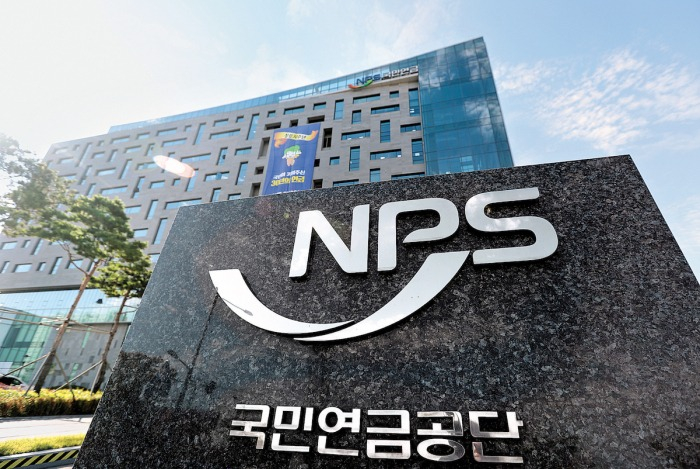Pension funds
NPS underperforms global peers by returns for Q1-Q3 2022
The world's third-largest pension fund saw a 7.1% loss, while Future Fund and OTTP respectively achieved 5.1% and 1.2% profits
By Jan 31, 2023 (Gmt+09:00)
2
Min read
Most Read
LG Chem to sell water filter business to Glenwood PE for $692 million


Kyobo Life poised to buy Japan’s SBI Group-owned savings bank


KT&G eyes overseas M&A after rejecting activist fund's offer


StockX in merger talks with Naver’s online reseller Kream


Mirae Asset to be named Korea Post’s core real estate fund operator



South Korea's National Pension Service (NPS), the world's third-largest pension fund, ranked 10th out of the global 42 state-owned investors by rate of return for the first three quarters of last year, according to investment data platform Global SWF's Year 2022 in Review.
Last November, NPS' fund management arm posted a 7.1% loss for the first nine months of 2022. It outperformed some global pension giants like the California Public Employees' Retirement System (CalPERS), which posted a 15.9% loss during the same period, as well as Dutch pension fund ABP and Norges Bank Investment Management (NBIM), which respectively saw 16.6% and 18.2% losses.
But its performance was poor compared with Australian state-owned Future Fund and Canada-based Ontario Teachers' Pension Plan (OTTP), which respectively achieved 5.1% and 1.2% profits during the same period. Japan's Government Pension Investment Fund (GPIF), the world's largest pension fund, had a 3.8% loss.
NPS also underperformed some domestic pension funds last year. It posted a 4.9% loss on its investments from January to the end of November in 2022, while Government Employees Pension Service (GEPS) and Teachers' Pension (TP) respectively had 3.4% and 4.7% losses.
The world's third-largest pension fund, managing 920.4 trillion won ($748.3 billion) in assets, is said to have not used economies of scale.
NPS didn't rank in the top 10 state-owned investors by fresh capital deployed from 2018 to 2021, except for once in 2020 when it ranked ninth, according to the report.
FLEXIBILITY AND SPEED NEEDED FOR INVESTMENT EXECUTION
NPS' asset allocation strategy is relatively rigid, which slows the pension fund’s investment execution. Based on a five-year investment plan, it constructs portfolios and sets up target exposure to each asset class.
Market watchers advise the pension fund to allow itself more flexibility and speed for investment execution, rather than being constrained to target exposure and mid-term asset allocation, to ramp up profits as its assets will begin to deplete from 2041.
NPS' fund will hit 1.76 quadrillion won in 2040 and is set to be totally depleted by 2055, the pension fund announced on Jan. 27. It had previously expected the fund would be exhausted by 2057, but has put that forward two years due to the aging population and low birth rate.
Write to Byeong-Hwa Ryu at hwahwa@hankyung.com
Jihyun Kim edited this article.
More to Read
-
 Pension fundsKorea’s NPS to be in red in 2022 with 5.3% loss in Jan-Oct
Pension fundsKorea’s NPS to be in red in 2022 with 5.3% loss in Jan-OctJan 01, 2023 (Gmt+09:00)
2 Min read -
 Pension fundsNPS will intensify shareholder engagement, new CIO says
Pension fundsNPS will intensify shareholder engagement, new CIO saysDec 27, 2022 (Gmt+09:00)
2 Min read -
 Pension fundsNPS fund management taps former GEPS CIO Seo as new chief
Pension fundsNPS fund management taps former GEPS CIO Seo as new chiefDec 27, 2022 (Gmt+09:00)
1 Min read -
 Pension fundsNPS posts 7% investment loss in Q1-Q3 as equities, bonds plunge
Pension fundsNPS posts 7% investment loss in Q1-Q3 as equities, bonds plungeNov 29, 2022 (Gmt+09:00)
2 Min read -

Comment 0
LOG IN


